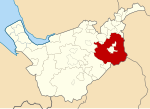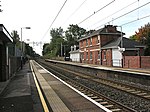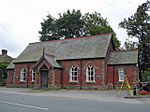Woodford, Greater Manchester

Woodford is a suburban village in the Metropolitan Borough of Stockport, Greater Manchester, England, 5.2 miles (8.4 km) south of Stockport, 5.7 miles (9.2 km) north-west of Macclesfield and 10.7 miles (17.2 km) south-east of Manchester. Woodford is the most southerly point of Greater Manchester; it consists of a ribbon of properties and a housing development along the A5102 road, around which is open countryside. Historically part of Cheshire, Woodford was a hamlet in the parish of Prestbury throughout the Middle Ages. It was incorporated into the Urban District of Hazel Grove and Bramhall in 1939 and then the Metropolitan Borough of Stockport in 1974. Woodford Aerodrome was opened in 1924 by Avro and produced aircraft such as the Avro Lancaster in World War II; it closed in 2011 and was demolished in 2015. Woodford residents have included Manchester United footballers George Best and Cristiano Ronaldo. Its large, expensive properties include New Hall, a 17th-century cottage and Grade II* listed building.
Excerpt from the Wikipedia article Woodford, Greater Manchester (License: CC BY-SA 3.0, Authors, Images).Woodford, Greater Manchester
Lancastrian Way,
Geographical coordinates (GPS) Address Website Nearby Places Show on map
Geographical coordinates (GPS)
| Latitude | Longitude |
|---|---|
| N 53.339 ° | E -2.156 ° |
Address
Woodford Primary School
Lancastrian Way
SK7 1GH
England, United Kingdom
Open on Google Maps








